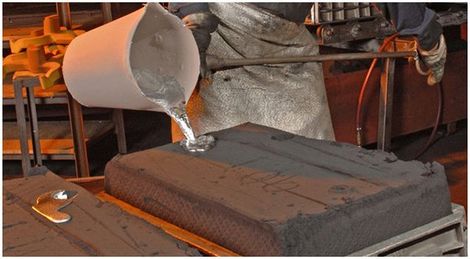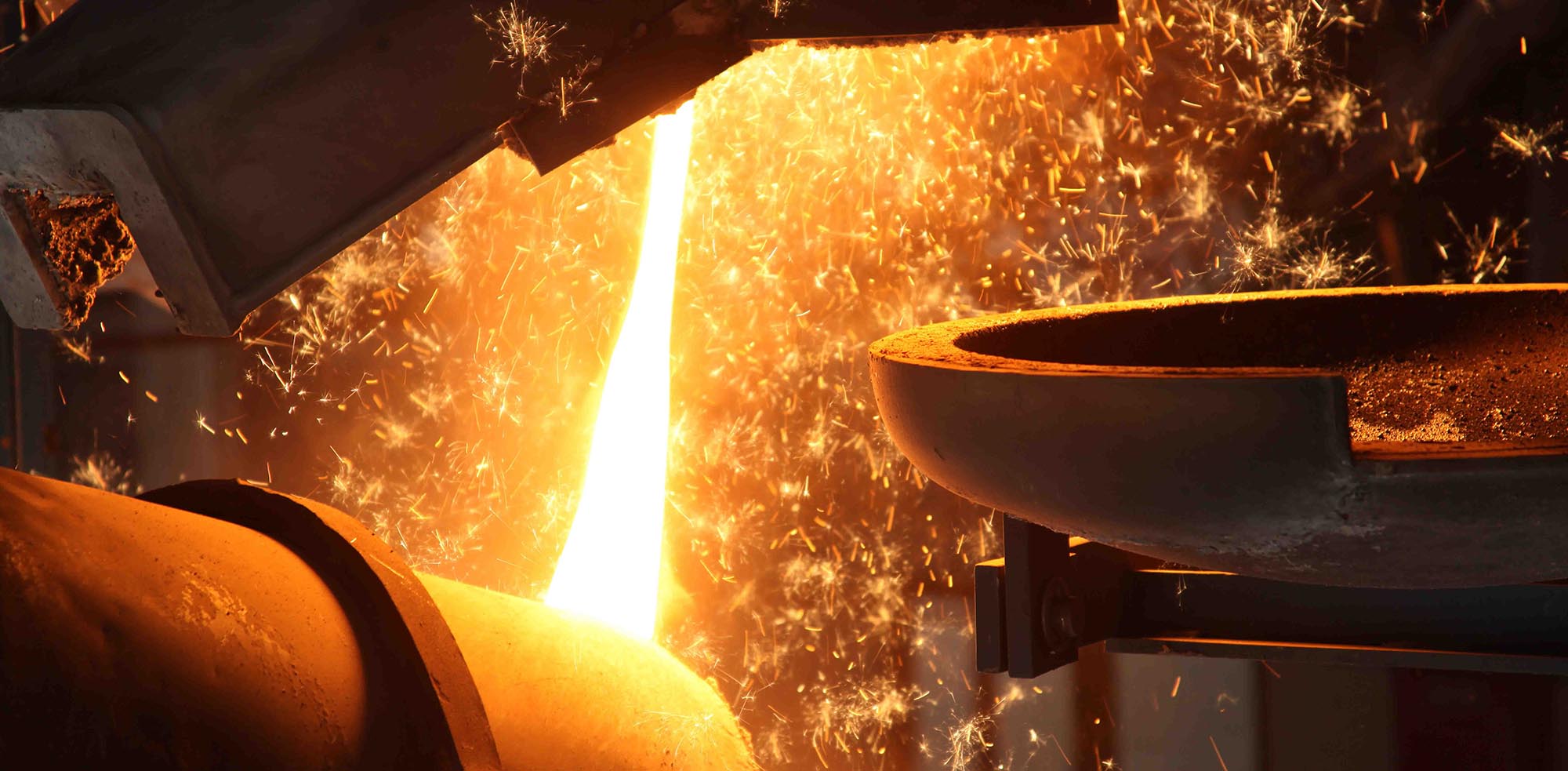Discover the Cutting-edge Strategies Made Use Of in a Metal Foundry for Superior Casting Outcomes
In today's competitive production landscape, metal foundries are progressively taking on ingenious strategies to boost casting outcomes - Aluminum Foundry. Advanced computer simulations permit for accurate modeling of liquified metal habits, while 3D printing enables rapid manufacturing of complex mold and mildews. Furthermore, environment-friendly materials and automation improve procedures. These advancements assure substantial renovations in performance and quality control. The impact of these technologies on sustainability and production practices stays to be fully checked out.
Advanced Computer Simulations in Metal Casting
Advanced computer system simulations have actually reinvented the metal spreading procedure by boosting precision and effectiveness. These sophisticated tools permit engineers to develop virtual versions of actors elements, allowing them to forecast the actions and assess of liquified metal during the casting stage. By replicating numerous criteria such as temperature level, flow rate, and cooling rates, suppliers can recognize prospective issues prior to physical manufacturing starts.
This aggressive technique decreases waste and lessens costly mistakes, eventually resulting in enhanced item top quality. Furthermore, simulations help with the optimization of mold styles, guaranteeing that they satisfy the particular needs of each project. The assimilation of computational fluid dynamics (CFD) and limited component evaluation (FEA) more contributes to the accuracy of these simulations, giving understandings that were formerly unattainable. Because of this, advanced computer simulations have come to be a crucial component of modern-day metal foundries, considerably progressing the industry's capabilities.
3D Printing for Molds and Patterns
3D printing has actually become a groundbreaking method for developing mold and mildews and patterns in the metal foundry sector. This modern technology enables the quick production of intricate geometries that standard manufacturing methods struggle to achieve. By utilizing additive production, foundries can produce elaborate styles with minimized preparations and material waste. The capacity to generate mold and mildews on demand permits greater adaptability in layout versions, promoting faster prototyping and adjustments.
Moreover, 3D printing can make use of a range of materials, including plastics and steels, customized to particular casting demands. This adaptability enhances the precision of molds, leading to exceptional casting end results with boosted surface finishes. Additionally, the decrease in the number of components required simplifies setting up procedures, better optimizing manufacturing effectiveness. As foundries remain to adopt 3D printing, they are poised to redefine sector requirements, leading the way for advancement and boosted productivity in metal casting operations.
Eco-Friendly Materials and Processes
As the metal foundry sector deals with raising stress to decrease its environmental impact, the fostering of environment-friendly materials and processes has actually ended up being crucial. Factories are now checking out sustainable options to standard products, such as utilizing bio-based binders and recycled steels. These materials not just decrease waste yet also reduced power intake during manufacturing.
Additionally, developments in sand spreading strategies have actually led to the use of artificial sands that are much less dangerous to the atmosphere. Shops are additionally applying cutting-edge processes like liquified metal therapy that lowers emissions and enhances the top quality of actors products.
Water-based coverings have replaced harmful solvents, promoting a more secure job setting. By incorporating these environmentally friendly methods, metal foundries can significantly decrease their environmental influence while keeping top quality spreading outcomes. This change not just profits the environment however additionally lines up with the growing customer demand for sustainable manufacturing solutions
Automation and Robotics in Foundry Workflow
While the metal foundry market welcomes advancement, the integration of automation and robotics is changing operations considerably. Automated systems streamline procedures such as mold and mildew production, metal putting, and casting completing, significantly boosting efficiency. Robotics help with the handling of heavy materials, reducing the threat of work environment injuries and making certain safer settings.

Further, making use of automated led vehicles (AGVs) enhances product transport within facilities, making certain timely shipment of components to appropriate workstations. By applying these innovations, foundries can adapt to changing demands with greater agility, ultimately resulting in improved success and competitiveness in the marketplace. As automation and robotics proceed to advance, they hold the possible to redefine traditional foundry practices and drive further developments in casting strategies.
Real-Time Surveillance and Quality Control Techniques
The developments in automation and robotics have actually led the way for extra innovative strategies to top quality guarantee in metal foundries. Real-time monitoring systems make use of sophisticated sensing units and data analytics to track essential criteria throughout the spreading procedure. my sources These systems continually examine variables such as temperature, stress, and product make-up, allowing immediate detection of inconsistencies from established standards.
Quality assurance methods currently integrate device understanding formulas that analyze historic information to predict potential problems before they take place. This proactive approach lessens waste and boosts total manufacturing efficiency. Additionally, integrated comments loops enable rapid modifications, ensuring that each spreading fulfills rigid top quality needs.
The execution of digital twins-- online reproductions of physical properties-- has actually also transformed top quality assurance, allowing designers to replicate and optimize processes in real-time. With each other, these innovative methods considerably improve the dependability and quality of spreadings, setting brand-new sector criteria in metal foundry operations.
Frequently Asked Questions
What Kinds of Metals Are Generally Cast in Factories?
Frequently cast metals in foundries include light weight aluminum, brass, iron, and bronze. Each metal displays special homes, making them ideal for numerous applications, such as automotive parts, equipment, and imaginative sculptures, improving their versatility in manufacturing.

The length of time Does the Casting Process Normally Take?
The casting process commonly takes several hours to days, depending on aspects such as the intricacy of the mold and mildew, kind of metal used, and cooling needs. Each stage influences the general period substantially.
What Security Procedures Are in Area for Foundry Employees?

How Are Defects in Castings Identified and Addressed?
Issues in castings are recognized via aesthetic examinations and non-destructive testing approaches. When found, foundry workers resolve them by fine-tuning processes, changing material make-ups, and implementing rehabilitative measures to ensure high quality and compliance with requirements.
What Is the Price Array for Metal Casting Providers?
The price array for metal casting solutions normally this website varies in between $1 to $10 per extra pound, depending upon aspects such as product type, intricacy of the design, and manufacturing volume, affecting overall pricing substantially.
In today's affordable manufacturing landscape, metal foundries are significantly adopting ingenious strategies to boost spreading results. As the metal foundry market faces boosting pressure to lower its environmental footprint, the fostering of environment-friendly products and This Site procedures has become crucial. Factories are currently discovering sustainable choices to standard products, such as utilizing recycled steels and bio-based binders. By incorporating these environment-friendly techniques, metal foundries can considerably reduce their ecological effect while maintaining high-grade spreading results. The improvements in automation and robotics have actually paved the way for a lot more advanced approaches to top quality assurance in metal foundries.